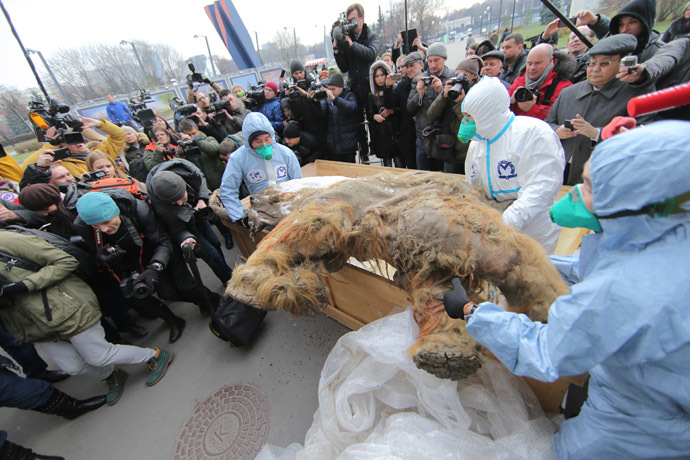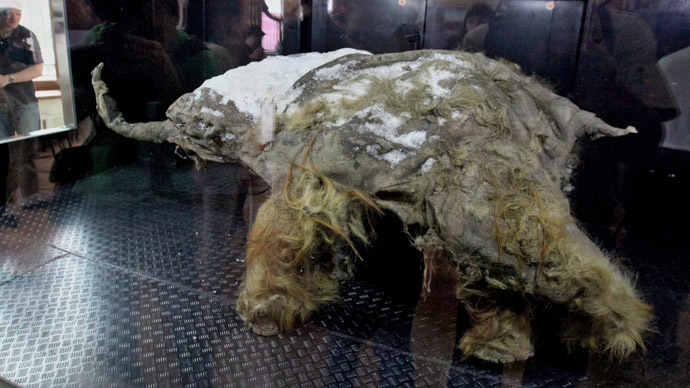An almost perfectly-preserved 39,000-year-old female mammoth has gone on display in Moscow, as scientists speculate on how the ancient creature died, and what she can reveal about the extinct species.
Discovered in 2010 in Russia’s Arctic Circle, Yuka - as scientists have dubbed her - has arrived from Japan on the latest, week-long leg of her wildly successful posthumous world tour, which she is spending in a cryo-chamber where the temperature is kept at a steady -18 Celsius.
The young woolly mammoth was discovered by indigenous Yakut tusk-hunters, during the brief northern summer, and appeared almost totally intact, including its distinctive reddish fur, although with mammoths having possessed almost any color coat, this is not necessarily what she looked like during her lifetime.

Looking at her size and weight of just over 100 kilograms, as well as physical characteristics, such as tusk rings and body, proportions researchers deduced that she was likely between 6 and 11 years of age at the time of death, a mere youngling in a species that is thought to have lived up to 80.
Most stunningly, Yuka had an intact brain, the first time such an organ – which usually disintegrates over thousands of years even in the Siberian permafrost – has been found in a mammoth.
“When we started an MRI scan of the mammoth, just to find our her age, and there it was – her brain. We were astonished. If she was delivered to us in the same state in which she was found, we would have known as much about the mammoth brain, as we know about the elephant brain,” Sergey Saveliev, a Russian neuroscientist, who studied Yuka, told TASS news agency.

Yuka’s body has provided the forensic evidence for bold theories about her likely demise.
Daniel Fisher's team from the University of Michigan suggested that Yuka may have survived an attack by a now-extinct cave lion, with left scars on her skin. Similar lion attacks on baby elephants can be observed in Africa, and the incisions match up.
But despite getting lucky once, Yuka did not manage a later escape, and a broken leg, and a series of unhealed bites indicates that she might have been pursued in the moments before her death.
The most interesting part is an apparent serrated cut from her head to tail, across the back. Unlike an animal, which tends to go through the stomach or suffocate the elephant through the trunk, these cuts appear much more patterned and methodical.
Scientists now assume that she may have been chased by a lion, with a human tribe watching from a distance, waiting for it to kill its prey, before shooing the lion away. Such tactics are still practiced by the Dorobo tribe in Kenya.
A more factual look at mammoths, which could grow to a size of 12 tons, and lived in certain remote enclaves until 1,700 BC and died due to hunting and climate change, can be provided by DNA sequencing.
“We need to completely sequence the mammoth DNA, and we hope that Yuka makes her contribution, particularly due to its unique state,” said Albert Protopopov, the chief Yakutia mammoth researcher.
But the Holy Grail, at least for the casual fans of mammoths would be de-extinction, actually cloning a new animal from a dead specimen, using a surrogate mother.
There are currently two leading teams, in Japan and South Korea, working on the project, and a specimen with a lot of soft tissue, is likely to improve their chances of success.
But Protopopov urged caution on that particular ambition: "It is not possible to find living cells as they don't survive after tens of thousands years."

